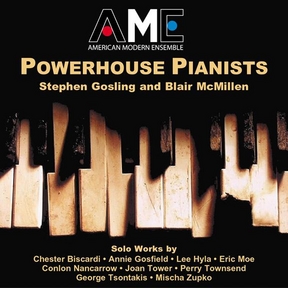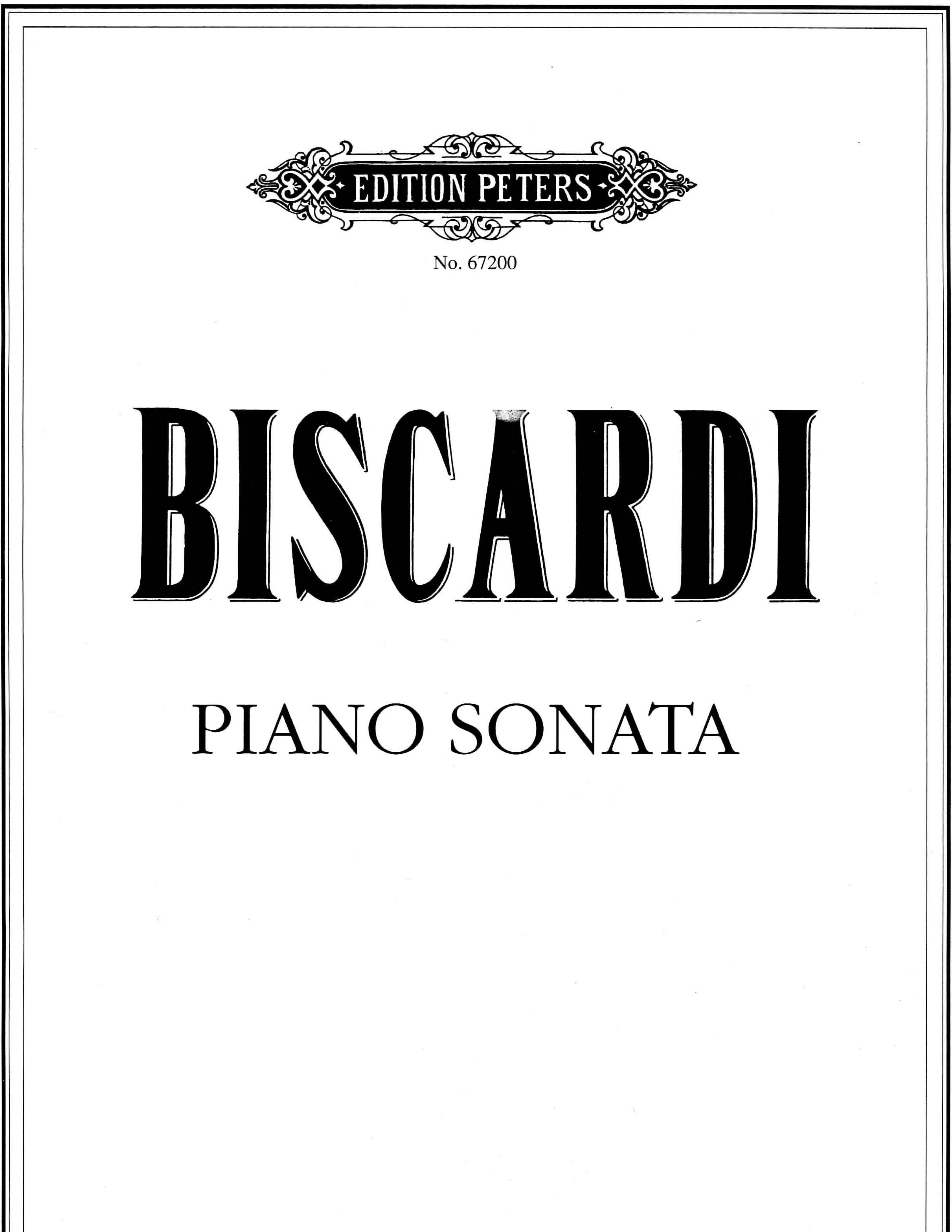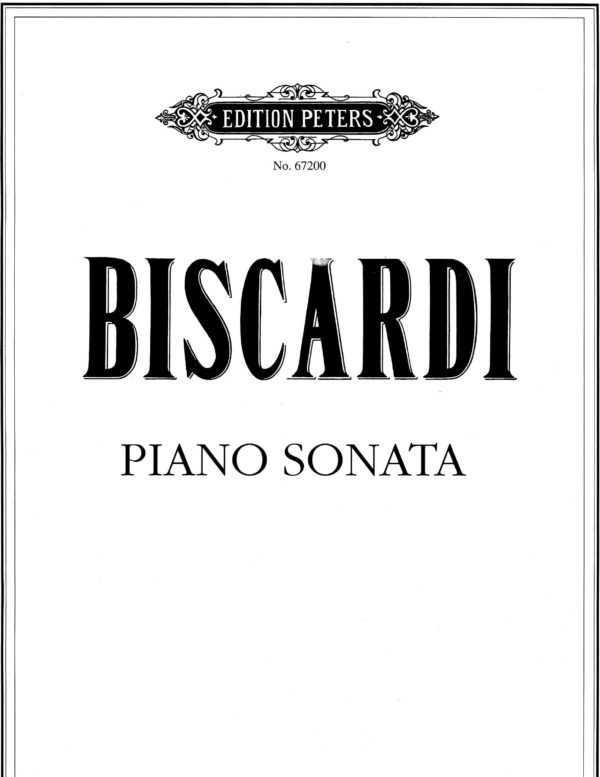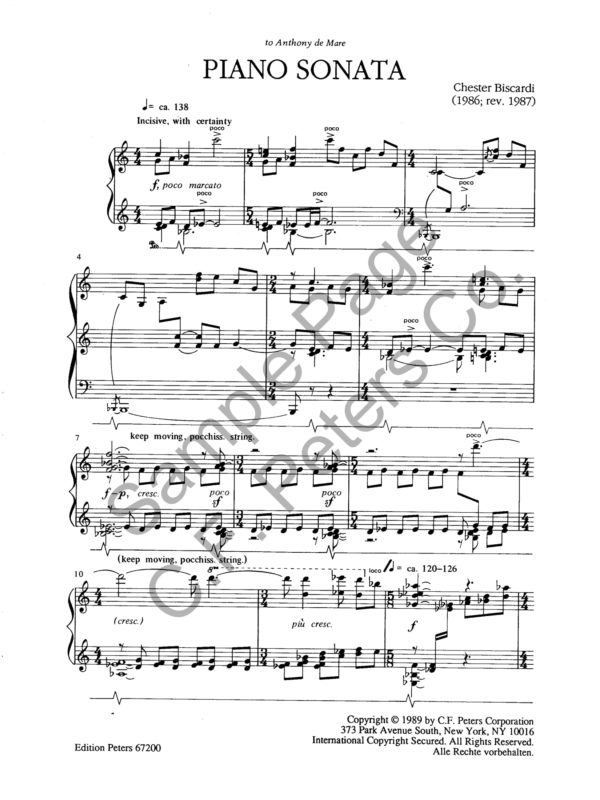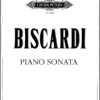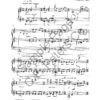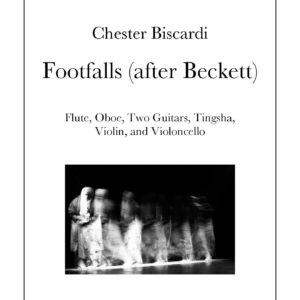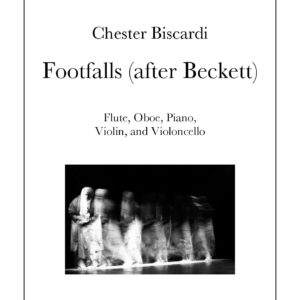Description
Audio
Blair McMillen, piano
This recording appears on
Powerhouse Pianists, American Modern Recordings AMR 1031 (New York, 2008) with works by Lee Hyla, Eric Moe, Annie Gosfield, George Tsontakis, Perry Townsend, Conlon Nancarrow, Joan Tower, David Rakowski, Mischa Zupko; also with Stephen Gosling, piano.
Clare Longendyke, piano
Premiere
11 November 1986
Anthony de Mare, piano (debut recital as a 1986 Winner of the young Concert Artists International Auditions)
92nd Street Y
New York, NY
Dedication
for Anthony de Mare
Publisher
C. F. Peters No. P67200
Program Notes
Since the early 1970s, I have been interested in the ways literature and painting influence musical ideas and forms – how literary images or use of color can inspire everything from the smallest melodic shape to a work’s overall structure.
The structure of Piano Sonata (1986; revised 1987) is based upon Jasper Johns’ Voice 2. Voice 2 has gone through three transformations: originally an oil and collage triptych (1971), later a three-panel lithograph (1982), and, in a final version, a nine-panel interchangeable series made of the 1982 lithograph. Johns borrows material from earlier works and utilizes overlapping, extension, and repetition as the main ingredients of form. Piano Sonata is divided into three sections which reflect three musical textures: angular and pulsating; fast runs and chords; and lyrical. As with Johns’ series, the three sections of Piano Sonata evolve into nine interactive sections and a coda.
Press
"Biscardi's music is clear-line and remarkably accessible in its expressivity."
— Fanfare Magazine (1988)
"All the works by Biscardi share a common ground in that they are expressive, sensitive and convincing."
— American Record Guide (1988)
Chester Biscardi's ten-minute, single movement
Piano Sonata is beautifully published by Peters. It is a festive, fanfare-like sound piece making effective use of well-spaced major triads colored with added notes and wide-spread, resonant sonorities composed primarily of stacks of perfect fourths and fifths. These rich sounds are magnified and prolonged by innumerable middle-register ostinatos and anchored by virtually constant employment of the damper pedal, the use of which the composer has carefully notated.
Biscardi attributes the inspiration for this celebratory composition to certain oils and lithographs by Jasper Johns. Whatever the work's genesis, it is difficult to imagine a more positive, optimistic musical statement. This is truly a sonata — a sounded piece — in the original sense of the word.
— David Burge, Notes (1991)
"Chester Biscardi's
Piano Sonata, a work written for Anthony de Mare in 1986, is perhaps illustrative of the best of contemporary music. A hauntingly lyrical neo-romanticism exists in a state of tension. The music pulls us now one way, now another."
— Fred Volkmer, The Southhampton Press (1987)
"Mr. Biscardi's
Piano Sonata (1986), a first performance, evolved from a dense chromaticism into a more open, accessible texture."
— John Rockwell, The New York Times (1986)
"This album - American Music from the Moscow Autumn Festival - closes with a solo piano piece by Chester Biscardi, called, appropriately, 'Piano Sonata' . . . all composers have at least ONE. Well, his one is Big and a grand choice for the finale. Hands everywhere at once . . . all over the keyboard. Big chords, big arpeggios . . . to a dimmer and dimmer, slower, more sparse section. What a fine nuance Ivanina brings to the music. I have to congratulate HER along with Biscardi."
— Canary Burton, Alternate Music Press (1999)
"Biscardi's
Sonata, which uses a basically tonal language of some harmonic richness is brief but tightly organized, and manages to say a good deal in its brief span."
— Records International Catalogue (1999)
"There were bursts of bright, ringing optimism (Chester Biscardi's
Piano Sonata) . . ."
— Bernard Holland, "Blair McMillen at the Tenri Cultural Institute", The New York Times (2005)
"Mr. McMillen's astute, focused playing . . . and his assertiveness contributed mightily to the success of Chester Biscardi's muscular, texturally busy
Piano Sonata (1986) as well."
— Allan Kozinn, "Blair McMillen - Keys to the Future Festival", The New York Times (2009)
"Last night I attended a great big concert in a teeny tiny space . . . The top two for the evening though were Chester Biscardi's
Piano Sonata, a lush, romantic, Ruggles/Ivesian/Sessions-type concoction which stuck-out stylistically in the programming more than a bit and so stayed with me the whole evening, and Annie Gosfield's
Brooklyn, October 5, 1941, a barn-burning pounder of a piece played with baseballs and catcher's glove."
— Jonathan Newman, Composer's Notebook (2005)
Powerhouse Pianists, the first release from the up-and-coming American Modern Ensemble (on its own label), features Blair McMillen (M.M. '95, piano) and Stephen Gosling (B.M. '93, M.M. '94, D.M.A. '00, piano) in an eclectic program of music from the last 25 years. McMillen offers a rarity right off the bat, with Chester Biscardi's softly glittering
Piano Sonata (1986)
— Bruce Hodges, The Juilliard Journal Online Discoveries (2008)
This relatively short (ten minutes) sonata for piano is a very attractive piece in modern tonal harmony, with a clean, American sound. Chester Biscardi, who was born in 1948 in Kenosha, WI, has an undergraduate degree in Italian Literature, a master of music degree from the University of Wisconsin, and a doctorate in music composition from Yale. His music typically seeks to explore the ways in which literary works or paintings can influence the composition of music.
This work stands aside from the typical music composition that simply seeks to translate the visual image of a work into a musical description or to evoke the mood of a painting or piece of literature. In this sonata Biscardi relates not only the structure and effect of the artwork that inspired it, but also in some measure to relate the unusual form of this sonata to the creative history of the original painting. The sonata is a reaction to a visual work by artist Jasper Johns called
Voice 2. Biscardi said that as Johns did in
Voice 2 he uses material from earlier works of his, uses repetition of material as patterns in the music, and overlaps and extends material into each other.
Voice 2 was originally a triptych of oil and collage painted in 1971. In 1982 Johns transformed it into a three-panel lithograph, and later into a nine-panel series made from the 1982 lithograph. The last version can be displayed in any order. Biscardi's sonata is divided into three sections, reflecting the triptych. Biscardi also uses three basic musical textures in the work. One is represented by the opening, with pulsing piano figurations and chordal patterns under hard, angular material. The second is fast, with runs and chords, and the third is lyrical. These three textures appear in each of the three main sections, resulting in nine linked divisions of the score (plus a coda).
The harmonies tend to reflect Phrygian-derived chordal structures that are frequently heard in modern jazz, though otherwise there is not a jazz influence on the sonata.
— Joseph Stevenson, All Music Guide to Classical Music (1987)
Chester Biscardi’s 1986 Piano Sonata, a work in one continuous movement. It's an amazing piece. The ideas seem to fly all over the place in every direction, but the music is quite grounded and cogent in the end. It's compact yet also diverse and multi-layered, like a musical lasagna, perhaps! I’ve loved this work ever since I heard Anthony de Mare play it at his New York 92nd St. “Y” recital debut. It’s full of juicy lyrical invention, joyously clotted chords, and a kind of rhythmic disquiet that one might describe as “Schumann on steroids.” I’ve decided to feature Blair McMillen’s terrific recent recording of the sonata.
— Jed Distler, Between the Keys, WWFM (July 2018)
